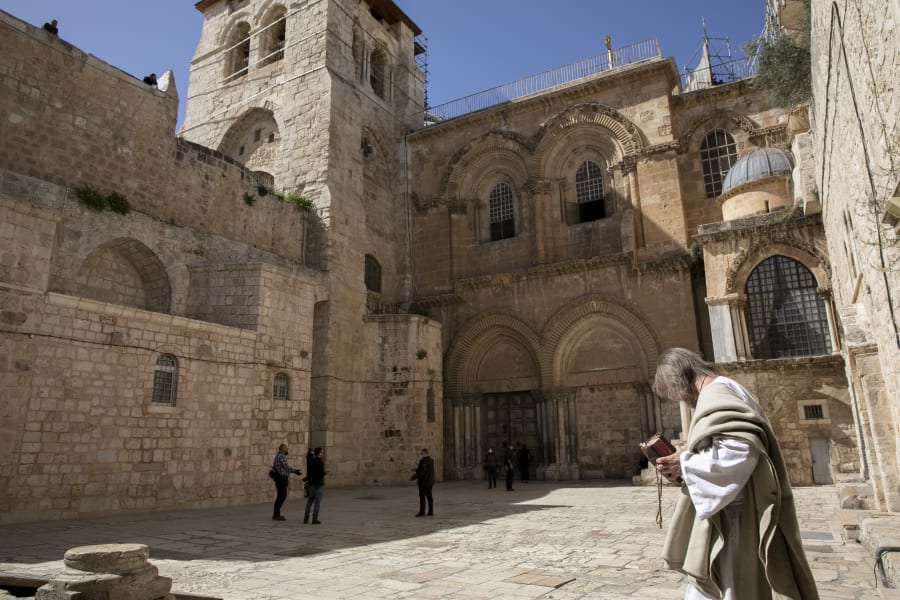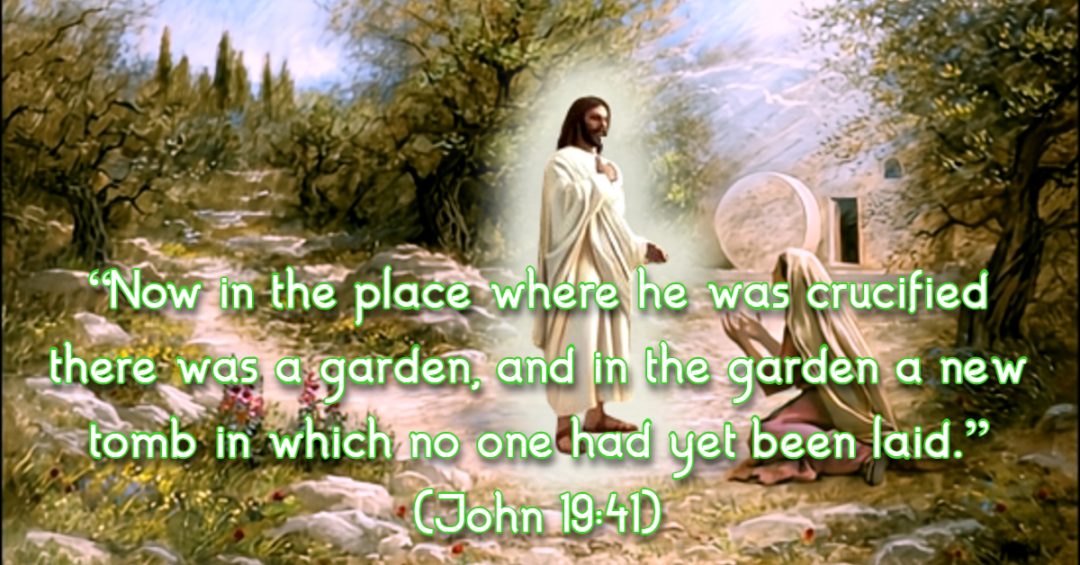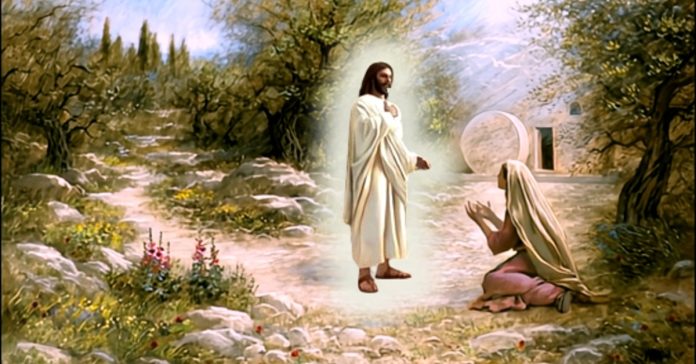Archeologists have announced the discovery of a garden beneath the Church of the Holy Sepulchre. The intersection of human history and sacred narrative often reveals itself in the layers of the earth. A remarkable discovery beneath the Church of the Holy Sepulchre in Jerusalem offers a compelling example. Archaeologists have uncovered evidence of an ancient garden. Dating to the first century CE, a finding that aligns with biblical descriptions of the site of Jesus Christ’s crucifixion and burial. This exploration delves into the historical significance of this discovery. Its connection to scripture, and what it reveals about Jerusalem’s past. Providing a window into a landscape that bridges faith and archaeology.
Soil and Salvation: The Historical Context of a Sacred Landscape
The relationship between physical landscapes and the stories they inspire has long intrigued historians, archaeologists, and theologians. In the Gospel of John (19:41), the crucifixion of Jesus is sets the stage. It reads “a garden, in which there was a new tomb”. A detail that situates one of Christianity’s defining moments within a cultivated space. The Church of the Holy Sepulchre, constructed in 335 CE under Emperor Constantine the Great, has been venerated for nearly two millennia. It’s location as both Golgotha (the “Place of the Skull”) and Christ’s tomb. Recent excavations beneath this iconic structure, conducted by the Israel Antiquities Authority and other researchers, have revealed soil layers, plant remains. Along with quarried stone suggest this area was indeed a garden during the Second Temple period (516 BCE–70 CE).
This discovery raises profound questions about the interplay between sacred texts and historical reality. The Second Temple era was a time of significant cultural and religious development in Judea. With Jerusalem serving as a spiritual and political center. Gardens were not uncommon in this region; they often surrounded tombs or served as private retreats. As documented in texts like the Talmud and archaeological sites such as the Garden Tomb nearby. The presence of a garden at this site, potentially active around 4 BCE to 33 CE. Offers a tangible link to the biblical narrative. Suggesting that the evangelist’s description may reflect a real feature of the landscape rather than a purely symbolic one.
Seeds of Scripture: Archaeological Evidence from the Holy Sepulchre

The Church of the Holy Sepulchre stands atop a complex historical site. Its foundations have long concealed clues to its earlier incarnations. Excavations in recent years have peeled back these layers. Archaeologists have identified organic material, including pollen grains and microscopic plant fragments. Alongside evidence of soil manipulation, indicating that this area was cultivated in antiquity. Carbon dating places these findings in the first century CE. Aligning with the time of Jesus’ death as recorded in the New Testament.
Further analysis reveals that the site was not always a garden. Before its cultivation, it functioned as a limestone quarry. A fact established through earlier digs in the 20th century by archaeologists like Kathleen Kenyon. Quarry marks and discarded stone blocks date this activity to the Iron Age. (1200–586 BCE) When Jerusalem’s builders extracted materials for construction. By the late Second Temple period, after the quarry was abandoned, the area appears to have been repurposed. The presence of fine soil layers suggests it was leveled and enriched. Possibly for planting herbs, small fruit trees, or ornamental shrubs. Common features of Judean gardens.

This garden likely existed alongside rock-hewn tombs, one of which tradition identifies as Christ’s burial place. The Gospel of Matthew (27:60) notes that Jesus was laid in a tomb “cut out of the rock,” and John’s mention of a nearby garden complements this setting. The archaeological evidence doesn’t directly confirm the tomb’s identity. But it paints a vivid picture of a first-century landscape where death and life coexisted in close proximity. A duality resonant with the Christian story of resurrection.
Garden Progression: Tracing the Site’s Transformation Over Time
The evolution of this location reflects a broader narrative of adaptation and meaning-making. Initially a quarry, the site provided raw materials for Jerusalem’s growth during the Iron Age. Possibly also into the Persian period (586–332 BCE). By the Hellenistic and Roman eras (332 BCE–324 CE), as the city expanded under Hasmonean and Herodian rule, the quarry fell out of use. Its rocky terrain, pocked with natural caves and artificial cuttings. This made it a logical spot for tombs, a practice well-documented in Jewish burial customs of the time. The shift to a garden likely occurred in the decades before or during Roman occupation. Transforming a utilitarian space into one of cultivation and perhaps contemplation.
Historical records offer context for this transition. The Roman historian Josephus, writing in the late first century CE, describes Jerusalem’s environs as dotted with gardens and orchards, especially near the city walls. The Holy Sepulchre site, just outside the ancient city’s boundaries during Jesus’ time (the Second Wall enclosed it later), fits this pattern. The garden’s existence was short-lived, however. After the crucifixion and the destruction of Jerusalem in 70 CE by Titus. The area fell into obscurity. Until the Roman Emperor Hadrian built a temple to Venus over it in 135 CE. Possibly to suppress its Christian significance.
This pagan overlay lasted until 326 CE, when Constantine’s mother, Helena, visited Jerusalem and identified the site as Golgotha. Constantine ordered the temple razed and a basilica constructed, completed in 335 CE. The garden, by then buried under centuries of debris and construction, was effectively sealed beneath the church’s foundations. Its rediscovery now reveals how human activity, quarrying, planting, & building. Layered meaning onto the same patch of earth, each phase reflecting the needs and beliefs of its time.
Oldest on Record: Situating the Garden in Jerusalem’s Deep History
While the garden itself dates to the first century CE, the site’s history stretches further back. The quarry beneath it operated as early as the Iron Age, potentially linked to the reigns of kings like Hezekiah. (circa 715–686 BCE) Whose water tunnel project required vast stone resources. Some researchers speculate the area held significance even before its quarrying days. Perhaps as a natural outcrop used for gatherings or rituals in the Bronze Age. (3300–1200 BCE) Though evidence for this remains scant.
Compared to older archaeological finds, like the 9,000-year-old plastered skulls of Jericho. Or the 3,000-year-old Canaanite temples of Lachish; this garden is relatively recent. Its importance lies not in its antiquity but in its specificity. It ties a particular moment, the crucifixion, to a physical setting preserved in both text and tradition. The Church of the Holy Sepulchre’s enduring role as a pilgrimage site, drawing millions annually. Amplifying the discovery’s weight, offering a rare convergence of historical data and spiritual legacy.
Closing Remarks: A Landscape of Memory and Mystery
The traces of this ancient garden beneath the Church of the Holy Sepulchre invite us to stand at the edge of history and peer into a world both familiar and remote. They offer what archaeology can: fragments of soil and stone, painstakingly sifted to reveal a past we can touch. Yet the human story extends beyond these remnants, into realms of faith, imagination, and longing that no shovel can reach. Gardens in our time serve practical or aesthetic ends, and perhaps they did then too supplying food and offering shade.

